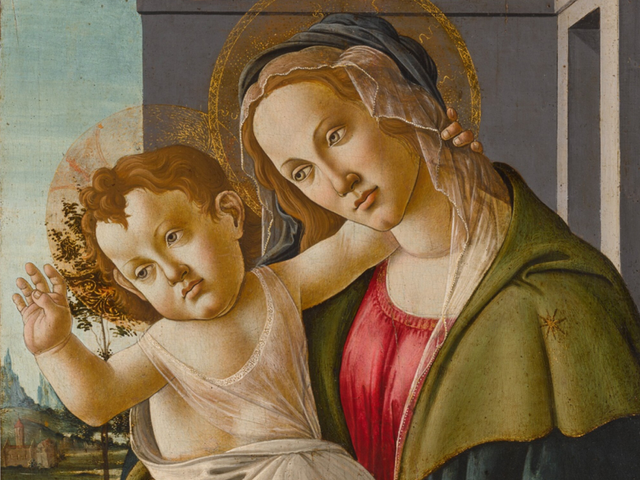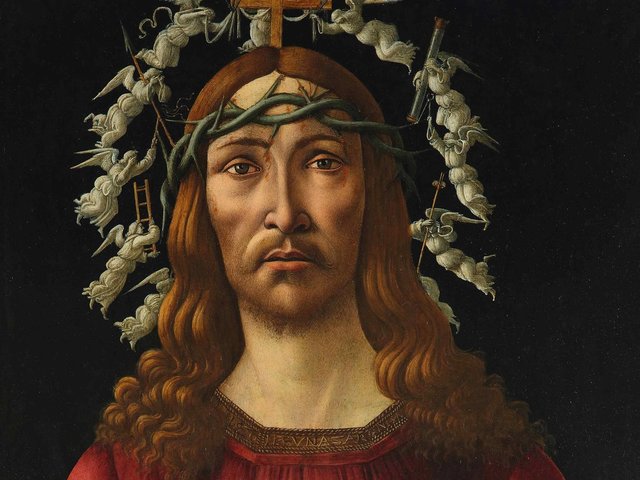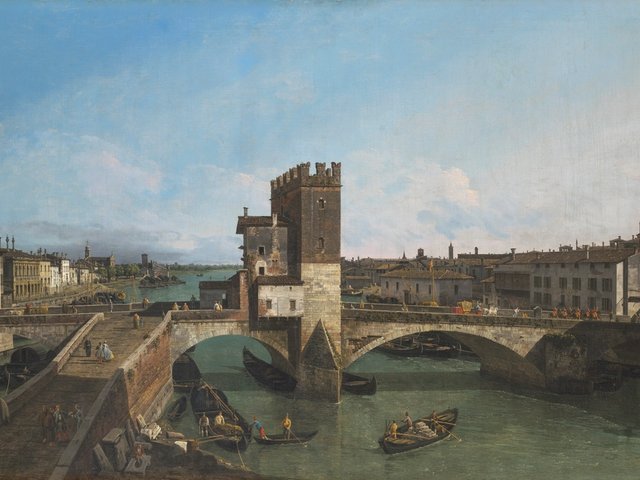The premier auctions among Christie’s and Sotheby’s winter sales of Old Master works in New York this week did little to counter concerns about the deteriorating market for the classics.
Christie’s Old Masters Part One sale, staged on Wednesday (31 January), limped to $10.9m ($13.8m with fees) against pre-sale expectations of $18m to $27.2m. (All pre-sale estimates exclude fees.) The equivalent sale in 2023 made $44.2 million with fees, about triple the premium-inclusive total realised in this year’s auction.
Six of the 78 works were withdrawn before the action began at Christie's, including Niccolo di Pietro Gerini’s multi-panel Scenes from the Passion of Christ, which carried an estimate of $1.2m to $1.8m. Of the 72 lots that crossed the block, 30 were bought in, making the sell-through rate an unsettling 58%.
Early results hinted at the market's softness. The fourth and fifth lots, both oil-on-panel views of sea-faring vessels by Adriaen Cornelisz van Salm, sold to the same anonymous telephone buyer for $130,000 ($163,800 with fees) and $110,000 ($138,600 with fees) against identical estimate ranges of $120,000 to $180,000 each.

Lucas Cranach the Elder, Henry IV the Devout, Duke of Saxony, Margrave of Meissen
Courtesy of Christie's Images Ltd.
Bigger names also set sail to modest results, including Lucas Cranach the Elder’s bearded, armor-clad and sword-bearing portrait Henry IV the Devout, Duke of Saxony, Margrave of Meissen. The painting went to another telephone bidder for $280,000 ($352,800 with fees), just above its $250,000 low expectation. Sir Peter Paul Rubens’s richly detailed Head study of an old woman with a veil, formerly identified as Maria Pypelinckx, the artist’s mother, looking down in profile to the left, dating from the mid-1620s, sold to an anonymous online bidder for a within-estimate $450,000 ($567,000 with fees).
The same online bidder (wielding paddle number 3040) remained active throughout the sale, nabbing at least four other works. The spree included Guido Reni’s violet-robed The Penitent Magdalene, which hammered at its $80,000 low estimate ($100,800 with fees), and Jean-Honoré Fragonard’s somewhat racy La Gimblette (The Ring Biscuit),featuring a semi-nude young woman playing footsie with her poodle in a rumpled bed. The latter realised a within-estimate $600,000 ($756,000 with fees).
That online competitor sprinkled a bit of spice onto what was otherwise a rather ho-hum sale.
‘An adjustment of expectations’
“It’s the usual story,” said the London and New York dealer Edmondo di Robilant of Robilant + Voena. His reaction to the relatively high number of buy-ins was that “the estimates made them impossible to sell,” adding: “There must be an adjustment of expectations to where the market is.”
A different view came from the seasoned London dealer Johnny van Haeften, who bought Jacob Duck’s atmospheric An Ensign seated in a guardroom, with officers playing at cards and a woman smoking by a chimney (1655) for what seemed a bargain price of $100,000 ($126,000 with fees) against an estimate of $200,000 to $300,000.
“Actually,” said van Haeften, “I think it went really well for fairly nondescript pictures. The market is quite polarised now, there’s always competition for very good things and people are holding their fire for them.”
Van Haeften also underbid Osias Beert’s A pewter plate of walnuts and hazelnuts, a glass of red wine and a butterfly on a table top, an oil-on-panel still life from around 1610 that went to a telephone bidder for $200,000 ($252,000 with fees). The painting was one of very few lots that hammered well above its high estimate—in this case, $150,000.
The sole work in the sale by a woman artist satisfied expectations that it would provoke competitive bidding. Artemisia Gentileschi’s 17th century Saint John the Baptist in the Wilderness, featuring the youthful saint bare-chested and partially draped in gold-hued robes, sold to an online bidder (paddle number 3840) for $780,000 ($982,800) with fees, nearly double the low estimate.

Artemisia Gentileschi, Saint John the Baptist in the Wilderness (17th c.)
Courtesy of Christie's
(Another lot by a woman painter, Anne Vallayer-Costa’s musical instrument still life, was withdrawn before the sale; it bore a target range of $500,000 to $700,000.)
Only one lot in the sale hammered above the $1m mark. A cassone front depicting The Story of Coriolanus, by Giovanni di Ser Giovanni Guidi (called Lo Scheggia), went for $1.25m ($1.6m with fees).
But the Bolognese painter Giulio Cesare Procaccini’s bloody Judith with the Head of Holofernes also came close, making $900,000 ($1.1m with fees). The painting last sold just one year ago, in the Fisch Davidson Collection auction at Sotheby’s in New York, where it made a hair over $1m with fees. Call it a premature re-entry.
The session closed with a whimper. The final lot, Joseph Mallord William Turner’s snow-capped, page-sized pencil and watercolor sketch from the J.E. Safra collection, went for $230,000 ($289,800 with fees), beneath its $300,000 low estimate.
All told, nothing in part one of Christie’s Old Masters sale could compete with the top lot in its 30 January standalone auction of 15 early Renaissance and Baroque sculptures from the Quentin Collection, also staged as part of what the house dubbed “Classic Week”. There, Giambologna’s sultry Sleeping Nymph, cast around 1584, exceeded Christie’s wildest dreams by fetching $4.9m ($6m with fees)—more than quadruple its $1.2m high estimate.
A slight improvement at Sotheby’s
The pace and overall quality picked up a bit of steam at Sotheby’s Master Paintings and Sculpture Part One on Thursday (1 February). The sale realised about $16.8m ($21m with fees) against pre-sale expectations of $22m to $33.7m. Still, 19 of the 49 lots offered went unsold, for a meager sell-through rate of 61%. The overall total also trailed last January’s equivalent sale, which made $23.6m ($28.8m with fees).
The morning session got off to a promising start, as the first two lots each hammered at their respective high estimate. Nardo di Cione’s two-panel, 14th-century tempera and gold ground composition Madonna Annunciate; Archangel Gabriel sold to a telephone bidder for $800,000 ($1m with fees), before Carlo Crivelli’s 15th-century Apostle Holding a Book, also in tempera and gold ground on panel, realised $1.2 million ($1.5m with fees). Both works were guaranteed by Sotheby’s and backed by irrevocable bids, also known as third-party guarantees.

Carlo Crivelli, Apostle Holding a Book (15th c.)
Courtesy of Sotheby's
But results for other works suggested the reserve, the confidential minimum price at which a lot can be sold, may have been dropped in the wake of Christie’s sub-par performance on Wednesday. The action-packed Triumph of Lucius Aemilius Paullus after the Battle of Pydna, also by Lo Scheggia, sold for $650,000 ($825,500 with fees) against a pre-sale estimate of $1m to $1.5m. The picture was Aryanised by Reichmarschall Herman Göring in 1941 from the extraordinary stock of Amsterdam art dealer Jacques Goudstikker and restituted to the latter’s heirs in 2006.
Bidding heated up for another Goudstikker entry, the Master of the Agilolphus Altar’s 16th-century double portrait Saint Agricius of Trier and Saint Anno of Cologne, which rose to $900,000 ($1.1m with fees), well above its estimate range of $300,000 to $500,000.
A striking and debonair Sir Anthony van Dyck Self-Portrait with Upturned Mustache and Raised Left Hand (1637-39) made its $2 million low target ($2.4m with fees) and came backed by an irrevocable bid. His older rival Peter Paul Rubens’s Self-Portrait of the Artist as a Young Man (1610-11) fared worse. The painting passed on a chandelier bid of $2.4 million against an estimate of $3m to $5m—the highest one left in the auction after Diego Velázquez’s portrait of Isabel de Borbón, originally expected to sell for around $35m, was withdrawn in December.
Sir Joshua Reynolds’s first-rate Portrait of Nancy (née Parsons) Horton, deaccessioned by the Metropolitan Museum of Art to benefit its acquisition fund, sold to Edmondo Di Robilant of Robilant + Voena for what seemed a bargain price of $450,000 ($571,500) against an estimate of $600,000 to $800,000. The Met had acquired the painting in 1945.

Sir Joshua Reynolds, Portrait of Nancy (née Parsons) Horton (circa 1735–1814 or 1815), Later Viscountess Maynard
Courtesy of Sotheby's
The Dutch were in demand, too. Another work from the collection of J.E. Safra, Salomon van Ruysdael’s Ships on the Boven-Merwede with Gorinchem in the Distance, signed on the gunwale of the foregrounded vessel and dated 1659 on its leeboard, sailed to $1.6m ($2m with fees). The following lot, Adam Willaerts’ busy oil on panel Dutch ships off a Rocky Coast with a Fishmarket on the Beach (1620), sold to London dealer Johnny van Haeften for a within-estimate $260,000 ($330,200).
Back to the auction’s four seven-figure sales: Luis Meléndez’s elaborate and somewhat surreal Still Life of Artichokes and Tomatoes in a Landscape brought $1.65m ($2.1m with fees), and the final lot of the session, Gustav Bauernfeind’s late 19th-century Holy Land depiction The Western Wall, took top lot honours by hammering for $2.8m ($3.4m with fees), just below its high estimate of $3m.
Perhaps Sotheby’s other greatest success came on Wednesday (31 January) during A Scholar Collects, one of the half-dozen or so “curated” mini-sales held during what the house calls Masters Week. There, a pastel by Élisabeth Louise Vigée Le Brun, Self-Portrait in Traveling Costume (1816), fetched $2.5m ($3.1m with fees), a record for a work on paper by an Old Master woman artist at auction.
Still, the few highlights of the week could not outshine the sense of disappointment in the room after Sotheby’s Master Paintings and Sculpture Part One.
As the thin crowd emptied out of the morning session, a noted London dealer poked this journalist’s arm and said, “I have four words for you: better sale, better result.”





